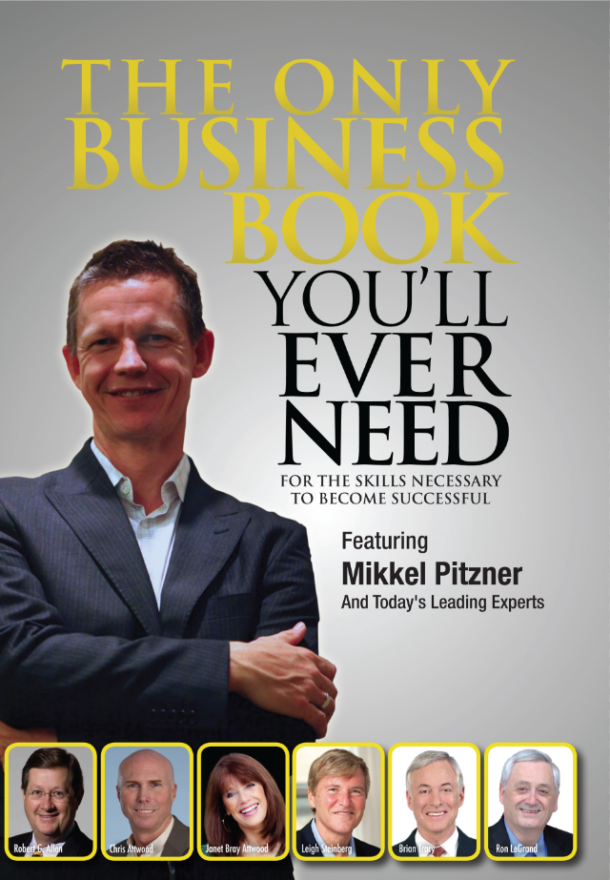
A deeper look at how business valuations really work, and what you can do to multiply yours.
We’ve talked about the largest wealth transfer in history happening right now.
We’ve exposed the brutal gap between wanting to sell and being ready to sell.
We’ve broken down what makes a business irresistible to buyers, and what sends them running.
Now comes the question that keeps every business owner up at night:
“How much is my business actually worth?”
If you’re like most owners, your answer probably sounds something like: “Well, I’ve heard businesses sell for 3 to 5 times their annual profit…”
And you wouldn’t be completely wrong, but you wouldn’t be right either.
The multiplier is the most misunderstood and underestimated part of business valuation.
And that misunderstanding is costing owners millions when they exit.
So let’s fix that. Let’s talk about what really drives your valuation, and more importantly, how you can engineer a higher multiple starting today.
The Multiplier: Your Business’s Magic Number
The multiplier (or multiple) is the lever that determines whether you retire comfortably or retire wealthy.
The basic formula looks simple:
Business Value = Financial Metric × Multiple
But here’s where it gets interesting: Small changes in your multiple create massive changes in your wealth.
Example:
- $1M EBITDA × 3x multiple = $3M sale price
- $1M EBITDA × 6x multiple = $6M sale price
Same business. Same profits. Double the wealth.
That extra 3x multiple just put an additional $3 million in your pocket. Your kids’ college is paid for. Your retirement is secured. Your legacy is established.
This is why understanding multiples isn’t just important, but wealth-defining.
The Metric That Matters: What Are We Actually Multiplying?
Most business owners get confused about what number actually gets multiplied. Let me clear this up once and for all.
Net Profit: The Amateur’s Metric
This is your bottom-line profit after all expenses, taxes, and depreciation.
Why buyers don’t use it:
- Your salary decisions affect it
- Your tax strategies distort it
- Your debt structure changes it
- It doesn’t show the true operating performance
Reality check: If someone quotes you a multiple of net profit, they’re either inexperienced or trying to lowball you.
EBITDA: The Professional Standard
Earnings Before Interest, Taxes, Depreciation, and Amortization.
This is what sophisticated buyers use because it shows the true operating performance of your business, stripped of financial engineering and tax strategies.
Why EBITDA matters:
- Shows pure business performance
- Easy for buyers to model their own financing and tax scenarios
- Industry standard for comparison
- What private equity and strategic buyers use
Critical distinction: When someone says “businesses sell for 4x,” they usually mean 4x EBITDA, not 4x net profit.
SDE: The Small Business Alternative
Seller’s Discretionary Earnings = EBITDA + Owner’s salary + discretionary expenses.
Used primarily for smaller businesses (under $5M revenue) where the owner is heavily involved in operations.
What gets added back:
- Owner’s salary and benefits
- Personal expenses run through the business
- One-time or unusual expenses
- Excessive owner perks
Example: A business showing $300K EBITDA might show $500K SDE when you add back the owner’s $150K salary and $50K in discretionary expenses.
The Multiple Matrix: What Determines Your Number
Here’s what most owners don’t realize: The multiple isn’t arbitrary. It’s a reflection of risk, transferability, and growth potential.
Buyers are essentially asking: “How confident am I that this business will continue generating these profits after I own it?”
Higher confidence = higher multiple. Lower confidence = lower multiple.
Factor #1: Business Size and Stability
The size premium is real:
- Under $1M EBITDA: 2-4x multiples
- $1-5M EBITDA: 3-6x multiples
- $5-20M EBITDA: 4-8x multiples
- $20M+ EBITDA: 6-12x+ multiples
Why size matters:
- Larger businesses have more systems and stability
- They attract more sophisticated (higher-paying) buyers
- They’re less dependent on any single person or customer
- They have more resources to weather challenges
Factor #2: Industry Dynamics
Some industries simply command premium multiples:
High-multiple industries (5-10x+):
- Software/SaaS
- Healthcare services
- Recurring revenue businesses
- Technology services
Medium-multiple industries (3-6x):
- Professional services
- Manufacturing with differentiation
- Specialized distribution
Lower-multiple industries (2-4x):
- Commodity businesses
- Highly competitive services
- Asset-heavy operations
The lesson: You can’t change your industry, but you can position yourself at the premium end of your industry’s range.
Factor #3: Owner Dependency (The Value Killer)
This is the #1 factor that destroys multiples.
If you’re the business — the primary salesperson, decision-maker, and problem-solver — buyers see a job, not an investment.
Owner-dependent businesses get 2-3x multiples.
Owner-independent businesses get 4-7x multiples.
Factor #4: Financial Predictability
Buyers pay premiums for predictable cash flows:
Recurring revenue models: 5-8x multiples
Subscription businesses: 6-10x multiples
Contract-based revenue: 4-7x multiples
Project-based revenue: 2-5x multiples
The predictability premium: Every dollar of recurring revenue is worth 2-3x more than project revenue in the eyes of buyers.
Factor #5: Customer Concentration
The diversification rule:
- No customer >10% of revenue: Premium multiple
- 1-2 customers >25% of revenue: Market multiple
- 1 customer >50% of revenue: Discount multiple
Why it matters: Customer concentration = business risk. And risk kills valuations.
Factor #6: Growth Trajectory
Buyers don’t just buy your past — they buy your future.
Declining businesses: 1-3x multiples (if they sell at all)
Flat businesses: 2-4x multiples
Growing businesses: 4-6x multiples
High-growth businesses: 6-12x+ multiples
The growth story: A clear plan to double the business in 3-5 years can add 1-2x to your multiple.
Factor #7: Management Team Quality
Owner + assistant: 2-3x multiple
Owner + department heads: 3-4x multiple
Professional management team: 4-6x multiple
CEO-level management: 5-8x+ multiple
The management premium: A strong second-in-command can add $1-2M to your sale price on a $1M EBITDA business.
The Multiple Engineering Process
Here’s the part that should excite you: You can engineer a higher multiple.
Most of the factors that determine your multiple are within your control. You just need to work on them systematically.
Phase 1: Foundation (0-6 months)
Clean up your financials:
- Get monthly P&L statements that make sense
- Separate personal and business expenses completely
- Track and optimize key performance indicators
- Build cash flow predictability
Document your operations:
- Create standard operating procedures for every key process
- Build training manuals for critical positions
- Systematize customer onboarding and service delivery
- Document vendor relationships and contracts
Phase 2: Systematization (6-18 months)
Build your management layer:
- Hire or promote a general manager/COO
- Create department heads for key functions
- Install decision-making processes that don’t require you
- Cross-train critical functions
Optimize your revenue model:
- Shift toward recurring revenue where possible
- Eliminate unprofitable customers and services
- Raise prices to improve margins
- Diversify your customer base
Phase 3: Growth Positioning (12-24 months)
Create the growth story:
- Identify expansion opportunities (geographic, product, market)
- Build scalable systems that can handle 2-3x current volume
- Establish strategic partnerships or acquisition targets
- Document the roadmap for future growth
Professional presentation:
- Get your financials audited or reviewed
- Create a comprehensive business overview
- Develop market analysis and competitive positioning
- Build buyer-ready documentation packages
Real Numbers: The Multiple Impact
Let me show you what this looks like in real dollars:
Case Study: Service Business with $1.5M EBITDA
Before optimization:
- Owner-dependent operations
- 40% customer concentration
- Declining margins
- No growth plan
- Multiple: 2.8x
- Sale price: $4.2M
After 24 months of multiple engineering:
- Professional management team
- Largest customer <15% of revenue
- 25% margin improvement
- Clear 5-year growth plan
- Multiple: 5.2x
- Sale price: $7.8M
Investment in optimization: $200K Additional sale proceeds: $3.6M ROI: 1,800%
Show me another investment with that kind of return.
The Compound Effect of Multiple Improvement
Here’s what most owners miss: Multiple improvement compounds with profit improvement.
If you increase your EBITDA by 50% AND increase your multiple by 50%, you don’t get 50% more value – you get 125% more value.
Example:
- Starting point: $1M EBITDA × 3x = $3M value
- After optimization: $1.5M EBITDA × 4.5x = $6.75M value
- Value increase: 125%
This is why systematic business optimization isn’t just about operations, but also about wealth creation.
Industry Benchmarks: Where Do You Stand?
Here are typical multiple ranges by business characteristics:
Revenue Size:
- Under $2M: 2-4x EBITDA
- $2-10M: 3-6x EBITDA
- $10-50M: 4-8x EBITDA
- $50M+: 6-12x+ EBITDA
Owner Dependency:
- Highly dependent: 2-3x
- Moderately dependent: 3-5x
- Largely independent: 4-7x
- Fully independent: 5-8x+
Revenue Model:
- Project-based: 2-4x
- Service contracts: 3-6x
- Recurring revenue: 4-8x
- Subscription model: 6-12x
Where does your business fall on these scales?
The Hidden Costs of Low Multiples
Most owners focus on growing revenue and profit. But they ignore the massive wealth impact of multiple optimization.
Consider this:
- Increasing EBITDA from $1M to $1.3M = $300K more profit
- Increasing multiple from 3x to 4x = $1M more sale value
The multiple improvement is 3x more valuable than the profit improvement.
Yet most owners spend 90% of their time on operations and 10% on multiple optimization.
That’s backwards.
Your Multiple Action Plan
Step 1: Calculate your current multiple Based on recent sales in your industry and your business characteristics, estimate where you stand today.
Step 2: Identify your biggest multiple killers
- Owner dependency?
- Customer concentration?
- Declining performance?
- Poor systems?
Step 3: Create your optimization roadmap What changes would have the biggest impact on your multiple? Prioritize these over pure revenue growth.
Step 4: Track your progress Monitor the factors that drive multiples, not just financial performance.
This Is Exactly What We Do
My Selling Your Business program is built around multiple optimization.
Because I’ve seen too many owners leave millions on the table – not because their businesses weren’t profitable, but because they weren’t optimized for maximum valuations.
We work on:
✅ Multiple assessment — where you stand and where you could be
✅ Owner independence — building systems that run without you
✅ Financial optimization — maximizing EBITDA and predictability
✅ Team development — creating the management layer buyers want
✅ Growth positioning — building the story that justifies premium multiples
✅ Risk reduction — eliminating the factors that kill valuations
✅ Market preparation — positioning for maximum buyer competition
The goal isn’t just to sell your business. It’s to engineer the highest possible multiple and maximize your life-changing exit.
The Time to Start Is Now
Here’s the truth most owners learn too late: Multiple optimization takes time.
You can’t decide to sell in six months and expect to engineer a premium multiple. The buyers see through rushed improvements.
But if you start now — while you’re still years away from selling — you can systematically build a business that commands top-tier multiples.
And here’s the beautiful part: Every improvement that increases your multiple also makes your business more profitable, more scalable, and more enjoyable to run.
You win while you own it. And you win even bigger when you sell it.
Your Business, Your Legacy, Your Choice
The difference between a 3x multiple and a 6x multiple isn’t luck.
It’s not market timing.
It’s not even industry dynamics.
It’s preparation. It’s optimization. It’s engineering your business for maximum value.
You control more of your valuation than you think.
The question is: What are you going to do about it?
Because every day you wait is another day of compounding value you’re leaving on the table.
Start building the business that buyers fight to own.
Start engineering the multiple that sets you up for life.
Your future self will thank you.
Written for business owners who refuse to accept “market rates” when they can engineer premium valuations.
Ready to engineer a higher multiple? The optimization starts now – not when you’re ready to sell.
My Selling Your Business (small) book is available here
Your FREE Selling My Business Checklist is available here
Check next post for a FREE Tool to examine Your Business’ Valuation


